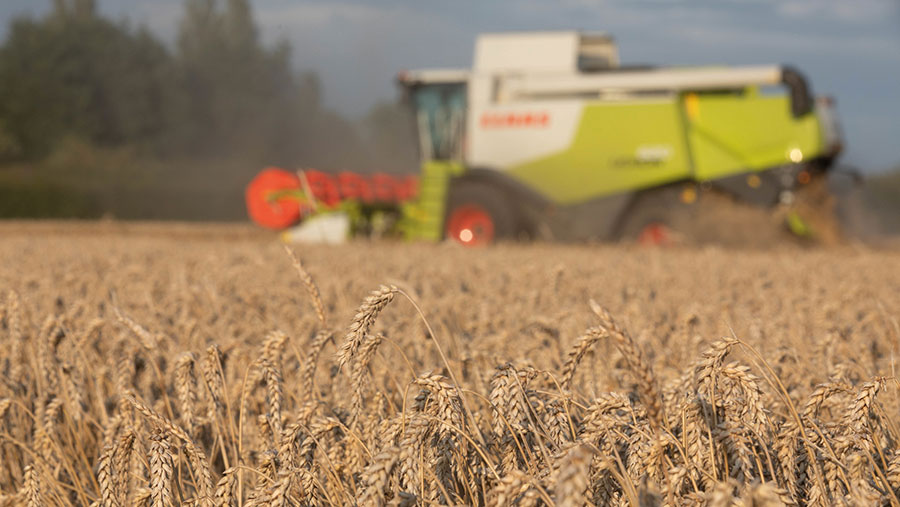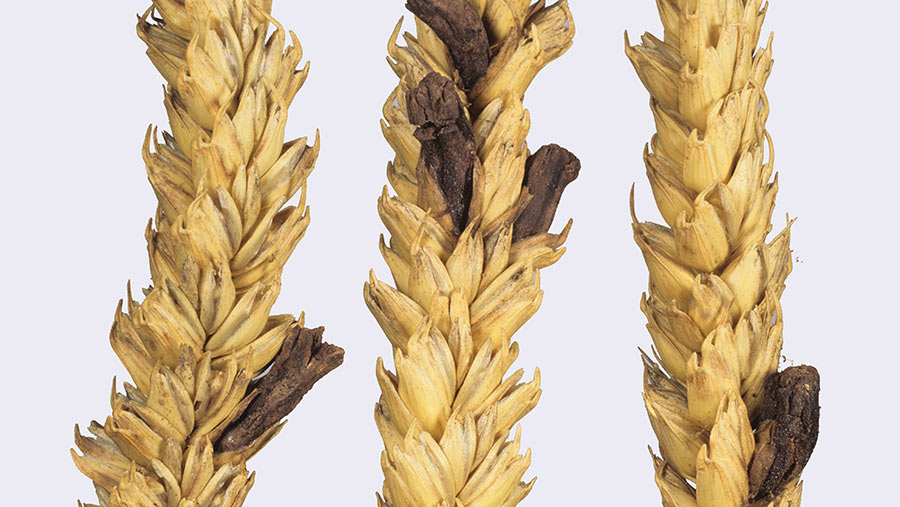How to prepare for ergot limits in cereals for harvest 2021
 © Tim Scrivener
© Tim Scrivener Growers need to prepare for new regulations covering maximum limits on ergot in cereals, to avoid loads being rejected by millers and merchants from harvest 2021 onwards.
The current 0.05% weight limit will be reduced to 0.02% and strict maximum limits on ergot alkaloids in processed cereal products will be applied.
See also: How to manage take-all in winter wheat after spring cereals
For growers, it means that ergot will have to be considered as a serious compliance issue next year, highlights Nabim senior technical adviserJoe Brennan. He stresses that any contaminated grain should be cleaned before delivery to a mill.
Failure to do so runs a high risk of rejection, he warns. “Handling grain containing sclerotia increases its general ergot content, putting the onus on cleaning grain as early as possible to reduce sclerotia breakage and further mycotoxin contamination.”
What is ergot?
Ergot is a fungal disease caused by Claviceps purpurea, where airborne spores infect the floret of flowering grasses and cereals in late spring/early summer.
Once in the spikelet, these spores increase rapidly and form fungal structures, with honeydew being produced prior to flowering. This contains many more spores.

Nigel Cattlin/Science Photo Library
The ergot sclerotium then develops – with a characteristic dark purple or black body forming in place of the kernel, often bigger than the wheat grain would be. This contains dormant fungus, which can go on to germinate and release spores.
Once they fall to the ground at harvest, the sclerotia remain viable in the soil for up to one year.
Health risk
While it has very little effect on yield, ergot contains large amounts of toxic alkaloids. When fed to animals or used to make flour, these can pose a significant risk to both animal and human health.
In the past, the disease ergotism – or St Anthony’s Fire as it was often called – arose when ergot alkaloids were ingested.The earliest recorded mycotoxosis caused hallucinations, spasms, gangrene and, often, death.
As such, it is a food safety issue, continues Mr Brennan, who points out that many UK mills already operate to a lower limit for ergot of either 0.01% or even zero tolerance. He adds that the industry should expect more mills to adopt these stricter levels.
“Even at the new level of 0.02% level, the alkaloid content of the grain can be too high to ensure compliance with processed product levels.”
Ergot – risk factors
- Cool, wet conditions at flowering – facilitate spore production and prolong flowering period
- Spring wheat varieties more susceptible – flowering period and open flower structure
- Grass weeds are excellent hosts – especially ryegrass and blackgrass
- Grass margins containing early flowering grass species
Flour limits
“The new maximum limit for white flour, for example, is 100ppb. For wholemeal flour, which contains the bran, it is 150ppb.”
Just one ergot sclerotia contains around 1,800,000ppb of ergot alkaloids, which is why their presence is the best indicator of alkaloid contamination.
“You have to assume that where sclerotia are present, your grain is contaminated. A rapid test is available if you don’t want to rely on a visual assessment, but it’s still really important to understand the tolerances of your local grain markets.”
Agronomic considerations
Faced with these lower limits, there are only a few things that growers can do in the field to prevent ergot infection.
With no chemical solutions – the disease isn’t seed-borne – there aren’t any varieties with resistance to ergot either.
There is, however, some evidence to indicate that open pollinated varieties and those with a long flowering period are more susceptible, which is why spring wheat is more affected.
Other hosts include grassweeds, so their control is considered key. Late flowering grass margins are preferred where ergot has been an issue, as they reduce the level of inoculum that could infect the neighbouring crop.
Ploughing can also have a role. As the ergot sclerotia only remain viable for one year, ploughing to a depth of 5cm reduces the level of inoculum for the following crop.
Seed standards
Sowing clean seed is important. Ergot can be contained in contaminated seed and it is one of only two diseases covered by the UK Seed Certification Scheme.
Ergot regulations
Current situation (harvest 2020)
• 0.05% w/w limit on ergot sclerotia in cereals
• No maximum limit on ergot alkaloids
Upcoming for Harvest 2021
• 0.02% w/w limit on ergot sclerotia in cereals
• Strict maximum limits on ergot alkaloids in processed cereal products
• Likely to apply from July 2021
Mr Brennan believes the new regulations and limits are practical. When changes were first discussed, the suggested limits would have resulted in 10% of UK flour failing to comply, which would have had implications for 480,000t of UK wheat.
“We pulled together the data and studies that showed what would happen if those original limits were imposed.
“As a result, they were pushed up to make them workable. It shows what can be achieved when the industry works together.”

